Whilst self-isolating to prevent the spread of Covid-19 many people are asking me for gardening activities for children. If there’s one silver-lining to the crisis, it’s that the weather has been kind to gardeners in the UK and if you are lucky to have access to a garden or balcony, it’s a comfort to be outside in the fresh air. I’ve written an article on quick-growing veg which can be read here and many of these are suitable for growing with children. Before you start any garden project though, it’s worth taking time to plan what you’re doing and manage your expectations and those of your children.

The joy of a home grown pumpkin – but this takes 5 months from seed to harvest.
Gardening with children can be fun and sowing seeds an obvious first project, but beware – the attention span of children can be short. The lack of quick progress does frustrate them. Choose quick germinating seeds and also ones that have a good end product – either pretty flowers or tasty veg. Then try to make it clear to children how long it will take to see the fruits of their labour.
Social distancing and staying at home – a word about supplies
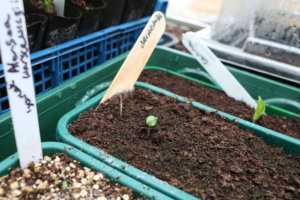
Seed sowing requires just three things – seeds, pots and compost/soil. Not much kit – but you may not have these to hand. You don’t need fancy seed trays or pots and can improvise and use plastic cups, or plastic food trays to sow your seeds into as long as they have drainage holes at the bottom. You’ll still need seeds and compost, although you could use garden soil if you like.
Many garden centres are still open, especially those that combine garden sundries with grocery sales. It’s more important than ever to check before you travel to a garden centre to make sure it’s open, and with Government guidance against unnecessary travel, only go if you can combine it with essential shopping.
Seeds are sometimes sold in supermarkets too but it’s also very easy to buy them online and receive by post. Seed suppliers are seeing high demand but are mostly still taking orders and your should arrive within a day or two. Some garden centres and mail-order suppliers will also deliver compost. My favourite compost supplier is Dalefoot, which delivers nationwide its range of peat free composts made from wool and bracken.
Gardening with children – choosing your seeds
The pure magic of seed germination cannot be underestimated and never gets boring. Seed sowing is simple and many children will already have done this at school. Too often though, children bring home a sunflower or broad bean from school to be left languishing on a kitchen worktop and never planted out in the garden.
This can be a secret disappointment to a child and put them off gardening, so think ahead and choose varieties that will work in your garden and make sure you see the project through.
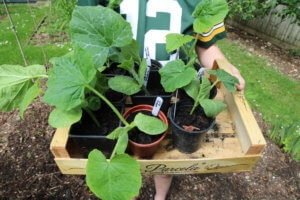
If you grow plants from seed, try to make sure you see the project through. This picture from last year is of my son about to plant out his squash plants.
Top tips for choosing your seeds
- Tempting as it is to allow the children to choose their seeds themselves, it’s not always a good idea. If you go along with them, and they set their heart on unsuitable ones, it could end in disappointment. If you overrule their decision, you may get tantrums. Choose them yourself for a better chance of success and a more positive experience all round.
- For young children, choose big seeds that are easy to handle and can be sown one to a pot. Older children can easily handle smaller seeds
- It sounds obvious but choose seeds that you can grow in your garden. There is no point growing a tall sunflower variety if you have a balcony.
- Choose things your child might like to eat but remember this is not the be all and end all. The achievement of growing something is the aim.
- Choose pretty flowers that can bring joy this summer and can be planted out into flower beds or patio pots. Flowers that like to be picked such as sweet peas and cosmos will lead to projects later in the season such as flower arranging or giving away to neighbours.
- Choose seeds that germinate quickly – children like to see progress.
Gardening with children – Top 5 quick germinators
Here are 5 of my favourites but shop around to see what you like. Germination times are usually indicated on the back of a packet, as are time from germination to crop/flowering. All these seeds can be started off indoors from March – May or outside from May onwards.
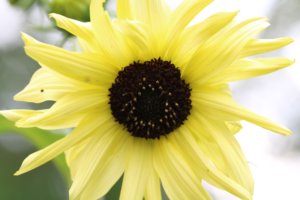 Sunflowers – Some children do like the challenge of growing a tall sunflower, such as ‘Russian Giant’ or ‘Giraffe’ and if yours are competitive then this is an option. I usually find at least one child will loose interest and hate the competitive element so I’d rather go for beauty than height. If you’re short on space choose a dwarf variety suitable for a pot on a balcony. Pictured here is medium-sized ‘Vanilla Ice’ . Good for a container are ‘ Teddy Bear’ and ‘Soleil’ amongst others.
Sunflowers – Some children do like the challenge of growing a tall sunflower, such as ‘Russian Giant’ or ‘Giraffe’ and if yours are competitive then this is an option. I usually find at least one child will loose interest and hate the competitive element so I’d rather go for beauty than height. If you’re short on space choose a dwarf variety suitable for a pot on a balcony. Pictured here is medium-sized ‘Vanilla Ice’ . Good for a container are ‘ Teddy Bear’ and ‘Soleil’ amongst others.
Sweet peas – these usually germinate within 2 weeks and often much sooner. They are not ideal in pots sadly as they need a long root run and plenty of water. Sweet peas are the magic porridge pot of flowers – the more you pick the more you will get. Building a support for them to grow up, such as a tripod of bamboo canes or sticks is added fun for the children. For older children it may be fun to build a string cordon frame – method here. Edible peas are also worth trying.
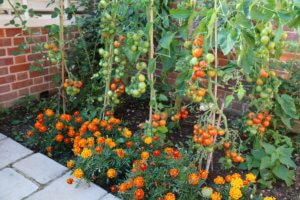 Tomatoes – these can geminate in under a week but sometimes longer. If you don’t have a greenhouse then choose varieties that work well outdoors in the UK – usually those listed as being “blight resistant”. Click here for varieties to try and instructions on growing tomatoes outdoors in the UK, including a video on how to shape cordon types. Pictured here is a variety called ‘Outdoor Girl’ alongside french marigolds that are also very easy to grow from seed.
Tomatoes – these can geminate in under a week but sometimes longer. If you don’t have a greenhouse then choose varieties that work well outdoors in the UK – usually those listed as being “blight resistant”. Click here for varieties to try and instructions on growing tomatoes outdoors in the UK, including a video on how to shape cordon types. Pictured here is a variety called ‘Outdoor Girl’ alongside french marigolds that are also very easy to grow from seed.
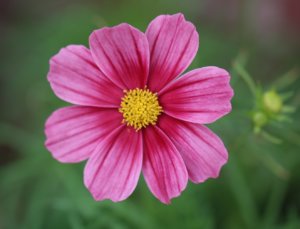 Cosmos – These geminate in 1-2 weeks and come in many colours and shapes. They generally have the very open faces that children like to draw. The seeds are long and thin and can be a bit fiddly but are easily sprinkled on the surface of a seed tray and covered over lightly. ‘Cupcake Mix’ is an interesting variety with a shape like a fairy cake case. ‘Lemonade’ is a pretty pale yellow.
Cosmos – These geminate in 1-2 weeks and come in many colours and shapes. They generally have the very open faces that children like to draw. The seeds are long and thin and can be a bit fiddly but are easily sprinkled on the surface of a seed tray and covered over lightly. ‘Cupcake Mix’ is an interesting variety with a shape like a fairy cake case. ‘Lemonade’ is a pretty pale yellow.
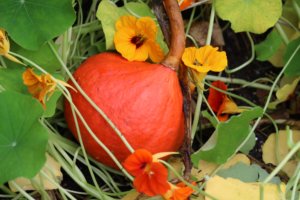 Squash– you could grow a huge pumpkin for halloween but more useful and tasty are smaller edible squash. Most need lots of water and nutrients so are best planted out in the garden rather than growing in a pot. They are essentially vine plants so need space to crawl across the soil but they can also be trained upwards. I grew one up a fence and the fruit ripened on the top of a flat top shed. Pictured here is ‘Red Kuri’ alongside nasturtium flowers – also edible and easy for children to grow. Some squash varieties, such as ‘Musque de Provence’ look like Cinderella’s coach.
Squash– you could grow a huge pumpkin for halloween but more useful and tasty are smaller edible squash. Most need lots of water and nutrients so are best planted out in the garden rather than growing in a pot. They are essentially vine plants so need space to crawl across the soil but they can also be trained upwards. I grew one up a fence and the fruit ripened on the top of a flat top shed. Pictured here is ‘Red Kuri’ alongside nasturtium flowers – also edible and easy for children to grow. Some squash varieties, such as ‘Musque de Provence’ look like Cinderella’s coach.
How to sow your seeds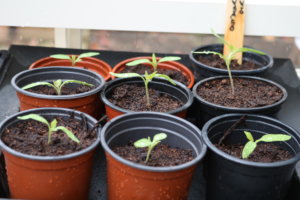
- For large seeds such as squash and sunflowers, take any pot with holes in the bottom and fill with compost, poke a hole in the compost with your finger or a pencil and place the seed inside. Cover over again, water and place somewhere warm and bright. A watering can with a rose is best for all seeds as it doesn’t move the seeds around.
- For smaller seeds such as tomatoes and cosmos it’s usually easier to fill the pot or a seed tray 2/3 with compost, place a few seeds across the surface, cover with compost and then water and leave. Once they have sprouted you will have several in your seed tray and will need to separate them into individual pots. This is a process called pricking out and is easy for all but the youngest children to do. Take a pencil and holding the leaves of your seedling gently dig around at its roots to release it from the soil. Fill a new pot with compost, make a hole in the compost with your pencil, put the roots into the hole and firm the compost back round the seedling with your pencil.
How to look after your seedlings
- Never let the compost dry out but don’t water-log them either. Children do like watering but tell them they’ll get to do lots of this when they’re planted out.
- Give the seedlings as much light as possible – the brightest place in your home.
- Once they’ve germinated and are growing bigger, move the seedlings outside on sunny or warm days. Do this more often as you get close to being able to plant them out in the garden, from May onwards. Give your children this responsibility, a bit like taking a pet for a walk. Don’t ever leave them outside when frost is forecast!
- Don’t let the seedlings outgrow their pots. Plant them out into larger pots or directly in the garden soil as soon as possible in May, unless frost is forecast.
Enjoy your seed sowing and remember – gardening can go wrong. I’ve lost count of the number of seedlings I’ve lost but the failures outweigh the successes and it’s how I’ve learned to garden.
If you’ve enjoyed this article and want to read about quick-growing veg to grow in self-isolation, click here. For a slightly more in depth look at seed sowing, designed to help you decipher the back of a seed packet, click here.
This is the first of a series of blogs I’ll be writing on activities to do with children so watch out for further articles. I have also writen one on Easter flower decorations.
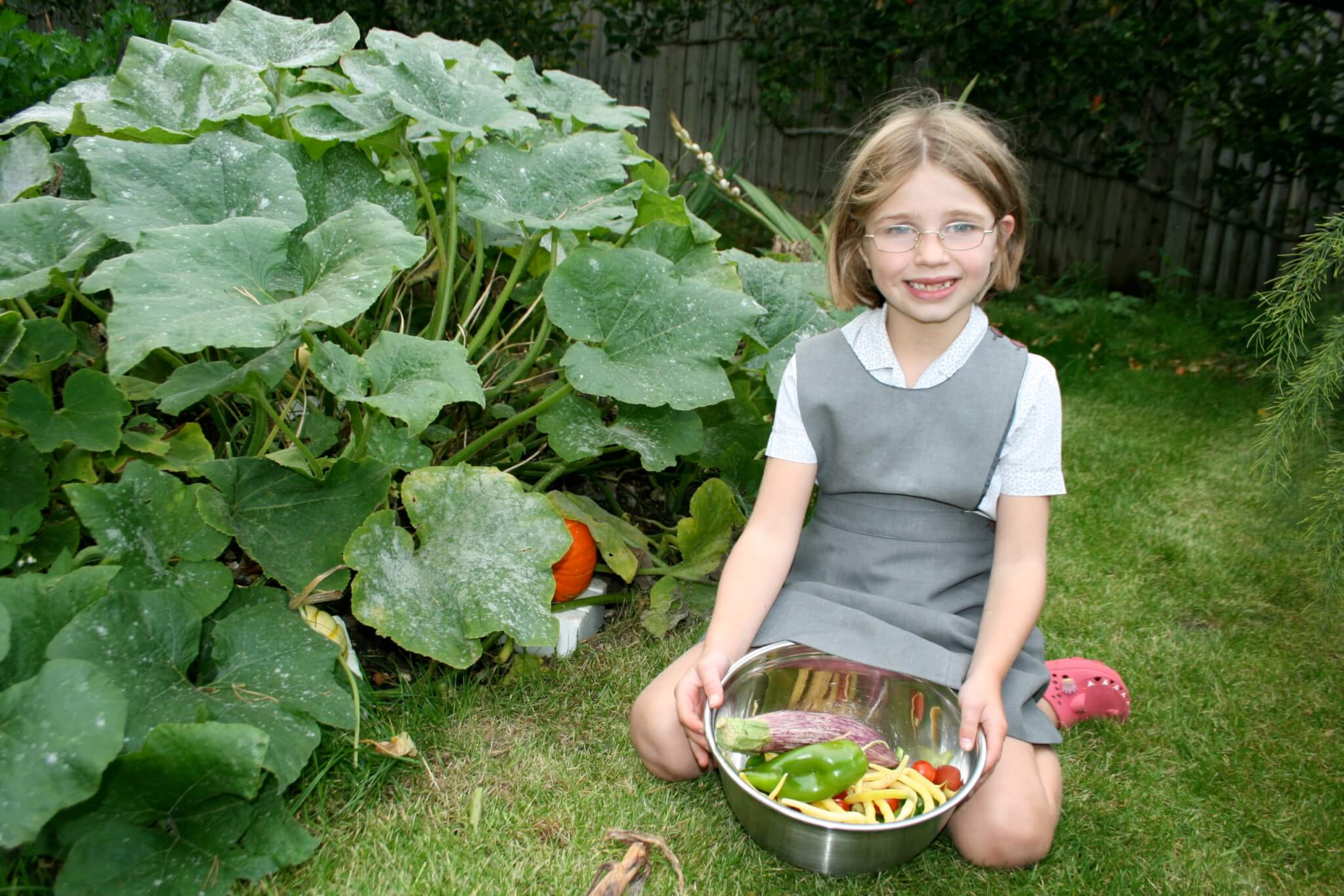
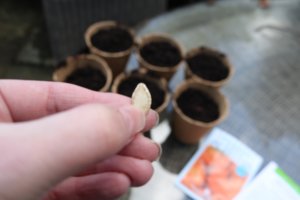

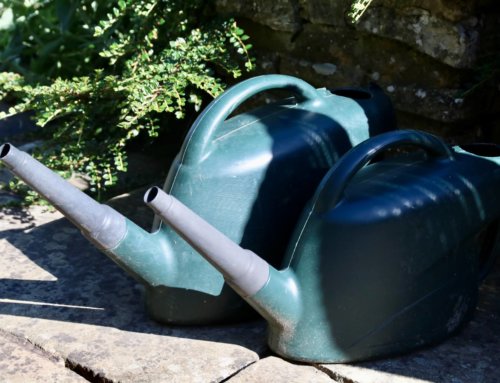
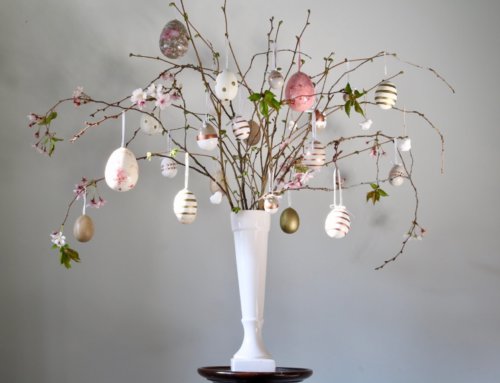
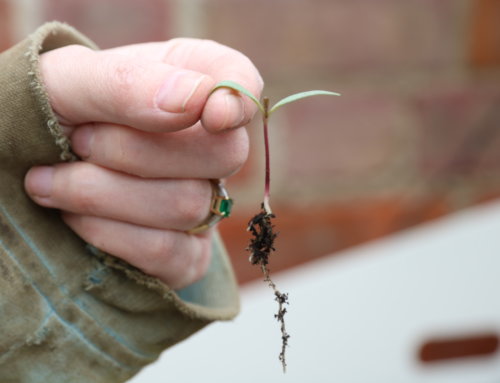
Hi, I have been trying to grow seeds for quite a while and have had very little sucess, I get the first shoot, then they die, I have got an electric propagator, and read all the hints and tips, am now desparate as normally I buy plug plants on line, please help
Oh Jane that’s so disappointing. I’m wondering if maybe they don’t need the heat of the propagator once they’ve germinated? Another problem is something called damping off. This is a fungal disease that can take hold when seedlings are too close together and the air can’t circulate. If you’ve sown lots of seeds in a tray this can happen quite easily. Can you tell me what plants you’ve sown and I can try and help further…